Mooli ke kofte, or radish dumplings simmered in a rich onion-yoghurt gravy, are one of those north Indian winter dishes that feel rustic and celebratory all at once. But making good mooli ke kofte isn’t just about following a recipe — it’s about understanding your ingredient and the technique that transforms it.
White radish (mooli) is a curious vegetable. Freshly grated, it’s peppery, pungent, and extremely watery — characteristics that can either work for you or completely unravel your dish. This blog is about getting the best out of that radish: developing flavour, managing moisture, and creating dumplings that hold together like a dream.
Step One: Grate It Fine
Grating mooli is your first crucial step. The fine texture from grating increases surface area, which helps release excess water and makes it easier to blend with other ingredients. Always grate by hand using the small holes of a box grater — the coarser ones leave too much texture and too much trapped water.
Tip: Once grated, don’t squeeze it immediately. We’re going to cook the water out, which gives us flavour we’d otherwise lose down the sink.
Step Two: Cook It Out, Don’t Squeeze It Out
Instead of squeezing the grated mooli to remove water (which is the usual shortcut), we take the slower, more delicious route: cook it down gently in a pan.
As the mooli cooks:
- The moisture gradually evaporates.
- The pungency mellows significantly.
- The sugars in the radish begin to caramelise, giving you a nutty, savoury sweetness that’s the heart of this dish.
Stir it often to avoid browning too quickly or catching on the pan. You’ll know it’s ready when it shrinks down and starts to look slightly dry and lightly golden.
Step Three: Bring the Mixture Together
Once the radish is cooled a little, it’s time to add the binders and flavourings.
Why Chickpea Flour?
Roasted gram flour (besan) plays three roles:
- Binder – It absorbs the residual moisture and holds everything together.
- Flavour enhancer – When roasted, it adds a deep, nutty background note that compliments the caramelised mooli.
- Structure provider – It makes the koftas slightly crisp on the outside and tender inside when fried.
You’ll also add crushed peanuts (for body), coconut (for sweetness and a subtle chew), chopped aromatics, and spices.
Troubleshooting: What If My Koftas Don’t Hold Together?
Sometimes the mixture can feel a little loose, especially if:
- The mooli wasn’t cooked down enough.
- Your onion or coconut added extra moisture.
Here’s what to do:
- Add more roasted besan a tablespoon at a time until the mixture firms up.
- Let the mix rest for 10–15 minutes before shaping. This gives besan time to absorb.
- Test-fry one ball first. If it breaks, it likely needs more binder or a bit more resting.
If you’re worried about over-drying: don’t. The cooked mooli still retains a moist bite. You’re aiming for a pliable, mouldable dough — not too wet, not too stiff.
Final Tip: Fry Gently
Medium heat is your friend. Too hot, and the koftas brown without cooking through. Too low, and they soak up oil. Fry in batches, don’t overcrowd, and drain them well.
Once done, they can be simmered gently in the gravy — but only just before serving. Too much time in the sauce and they’ll soften too much.
Mooli ke Kofte (Radish Dumplings in Gravy)
Ingredients
For the Koftas:
- 500 g white radish (mooli), grated
- 1 tbsp grated coconut
- ½ tbsp roasted peanuts
- 2 tbsp roasted gram flour (besan), plus more if needed
- 1 tsp garam masala
- 2 dried red chillies
- 1 green chilli, finely chopped
- 1 small onion, finely chopped
- 1 tbsp fresh coriander leaves, chopped
- Salt, to taste
- Oil, for deep frying
For the Gravy:
- 4 dried red chillies
- 1 tsp garlic paste
- 1 tsp coriander powder
- ½ tsp turmeric
- 3 onions, diced
- 1 onion, ground to a paste
- 100 ml oil
- 125 ml curd (yoghurt), whisked
- 1 tsp garam masala
- 4 green cardamoms
- 1 tsp finely chopped ginger
- 150 ml water
- Salt, to taste
Method
For the Koftas:
- Cook the mooli: In a wide pan, cook the grated radish on medium heat, stirring regularly, until all the moisture evaporates and it turns golden and aromatic. Set aside to cool.
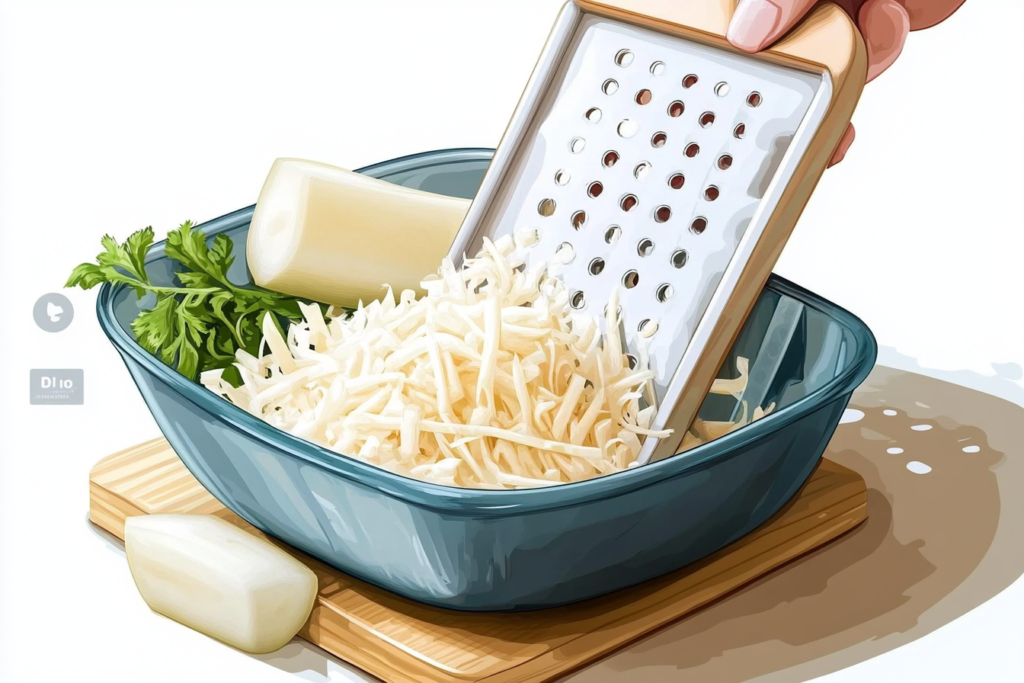
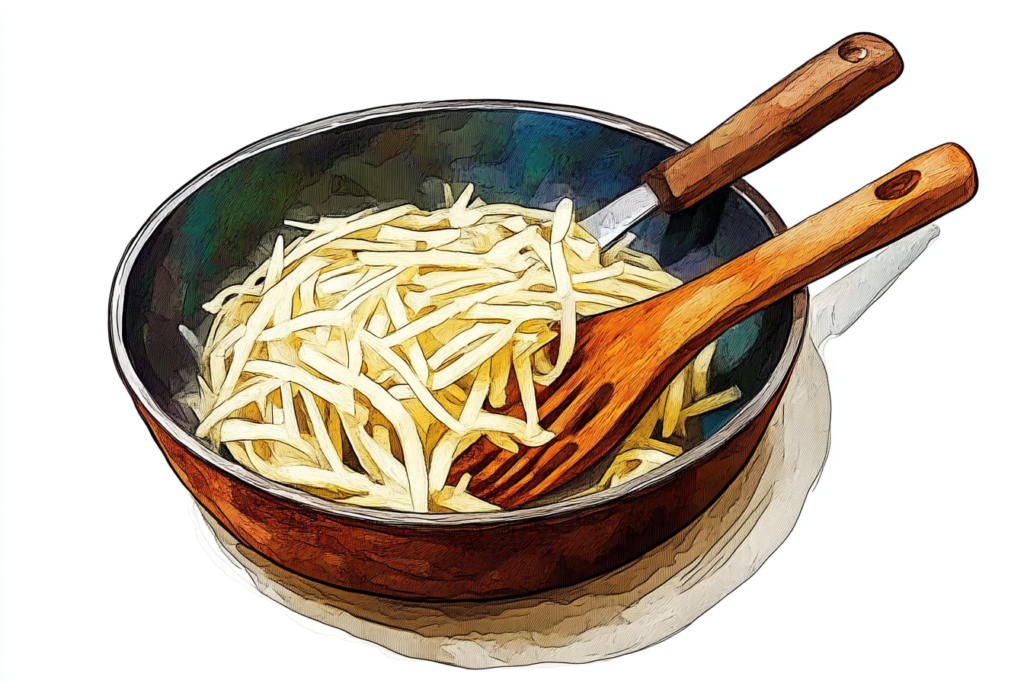
- Grind flavour base: Blend the coconut, roasted peanuts, besan, garam masala, and dried red chillies to a coarse paste.
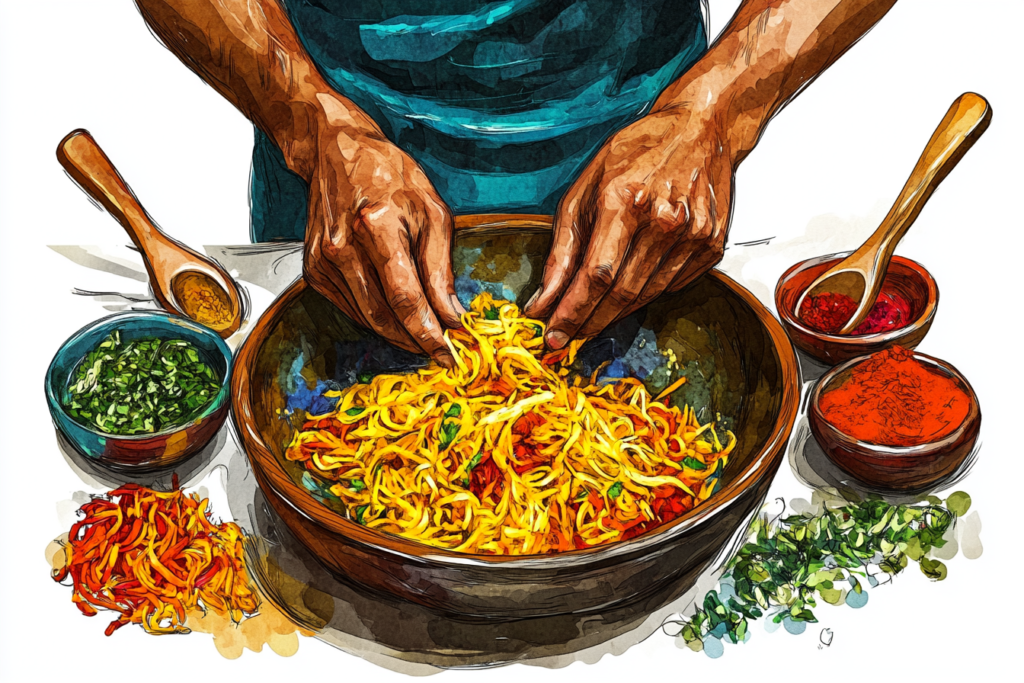
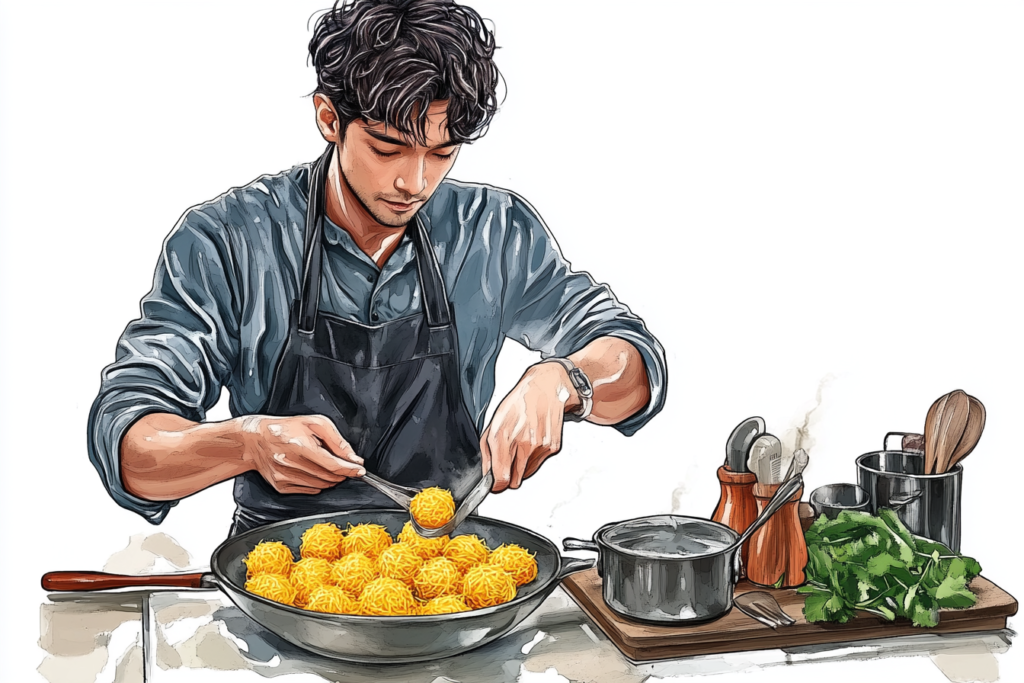
-
- Mix: In a large bowl, combine the cooled radish, ground mixture, chopped green chilli, onion, coriander leaves, and salt. Mix well.
-
- Adjust consistency: If the mixture feels loose, add a little more besan. Rest the mixture for 10–15 minutes.
- Shape koftas: Form small roundels with your hands and reserve. Try and make uniformly sized balls.
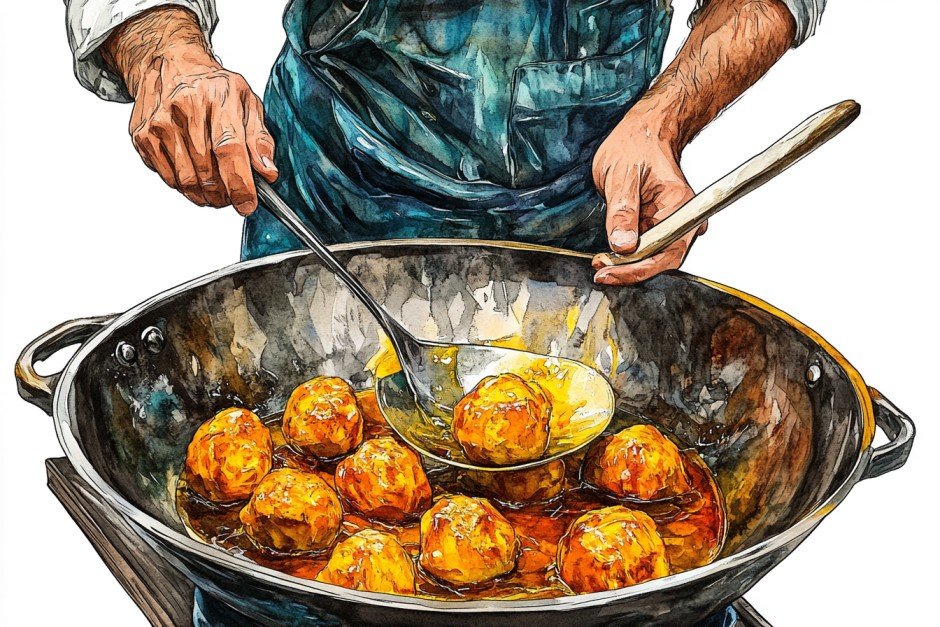
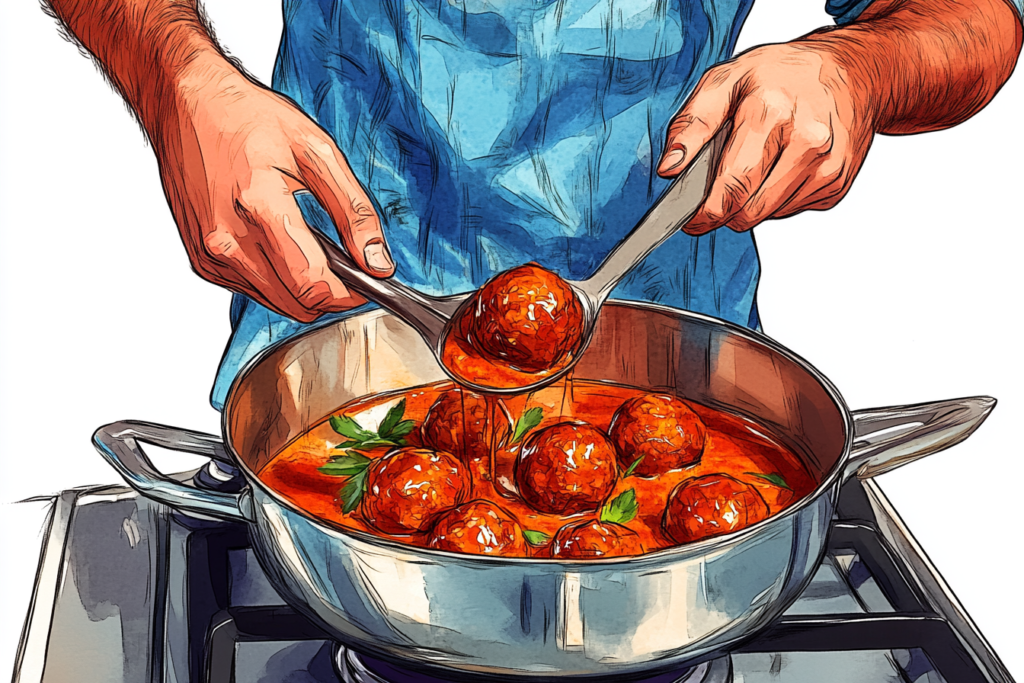
- Deep fry: Deep-fry on medium heat until golden brown. Drain on kitchen paper.
For the Gravy:
- Spice paste: Grind red chillies, garlic, turmeric, coriander powder, and salt into a paste.
- Cook base: Heat oil in a pan and fry the spice paste until aromatic. Add the diced and ground onions. Cook until softened and slightly browned.
- Add curd: Lower the heat and stir in the whisked curd slowly. Mix in garam masala, cardamoms, and chopped ginger.
- Simmer: Add water and let it simmer for 2–3 minutes.
To Finish:
- Gently add the koftas to the gravy and simmer for 5–6 minutes, just until heated through.
- Serve hot with chapatis, puris, or plain steamed rice.





